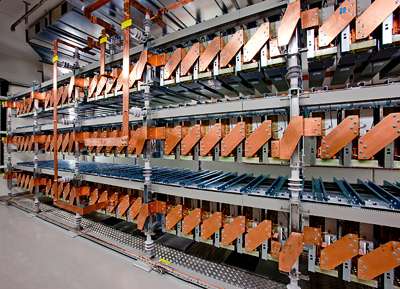Power exchange to become more economical

Siemens is facilitating the efficient flow of energy between the power network of an electric railway system and the public power grid. The company is delivering 11 gateway power converters to Sweden, Austria and Switzerland. In these countries, and many others, the rail system operates its own power plants and a private electrical grid that is connected to the public grid at certain points. As the amount of renewable energy increases, these connection points are becoming more important. For example, the rail system in Sweden has plans for eight new converters that will provide access to hydroelectric power from the public grid beginning in mid 2015. In Austria, a new converter will allow the rail system to feed excess electricity generated by its own hydroelectric plants to the public power grid more efficiently starting in 2014. The new converter will also connect the planned Tauernmoos hydroelectric plant with the railway system grid. Altogether, including two converters for Switzerland, these contracts are worth a total of €68 million.
Power converters change the frequency and voltage of electricity in one system so that it can be fed into another system. They are necessary because in the countries already mentioned, as well as in Germany, the railway system grid uses a frequency of 16.7 Hz, whereas the public grid operates at a frequency of 50 Hz.
The direct converters, contracted from Siemens, are from the Sitras SFC plus series. These use a modular construction of multiple power transistor components (IGBT) and capacitors connected in series to reach the desired voltage incrementally. This modern, multilevel technology loses less power during conversion compared to the previous standard solution. In addition, these units are clean. In other words they generate harmonic-free power and voltage conversions, so additional filters are not required. Multilevel installations are quieter and more compact then traditional converters and are therefore more suitable for urban areas. In Germany, Sitras SFC converters are already connecting the railway system grid with the Franken 1 power plant in Nuremberg-Gebersdorf. Nationwide, four more units will be installed in the German railway system grid in the next two years.
Siemens is also introducing this efficient multilevel conversion technology to high-voltage direct-current transmission applications. For example, it can be used to connect wind farms to the public power grid. Technologies for the efficient transmission and transformation of electricity are part Siemens' Environmental Portfolio, which earned the company sales of around €33 billion during the last fiscal year.
Provided by Siemens



















